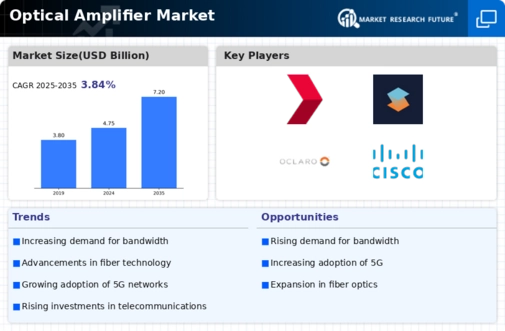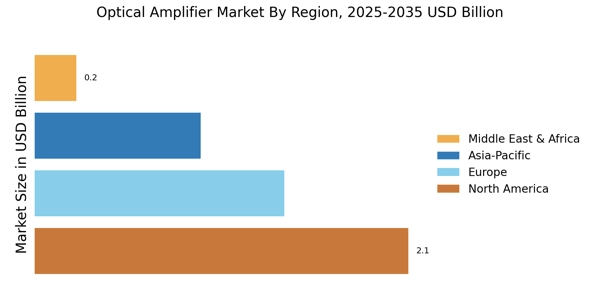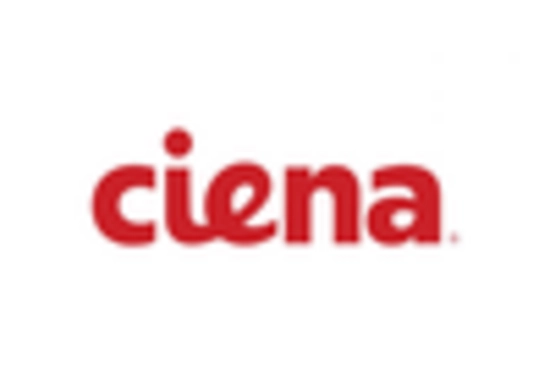The Optical Amplifier Market is currently characterized by a dynamic competitive landscape, driven by the increasing demand for high-speed data transmission and the expansion of telecommunications infrastructure. Key players such as Nokia (Finland), Cisco Systems (US), and Huawei Technologies (China) are strategically positioned to leverage their technological advancements and extensive portfolios. Nokia (Finland) focuses on innovation in optical networking solutions, emphasizing the integration of AI and machine learning to enhance network performance. Meanwhile, Cisco Systems (US) is concentrating on partnerships and acquisitions to bolster its optical capabilities, aiming to provide comprehensive solutions that cater to the evolving needs of service providers. Huawei Technologies (China) continues to expand its global footprint, investing heavily in R&D to maintain its competitive edge in optical amplification technologies, thereby shaping the competitive environment through aggressive market penetration strategies.
In terms of business tactics, companies are increasingly localizing manufacturing and optimizing supply chains to enhance operational efficiency and reduce costs. The market structure appears moderately fragmented, with several players vying for market share. However, the collective influence of major companies like Ciena Corporation (US) and Fujitsu (Japan) is notable, as they contribute to a competitive atmosphere that encourages innovation and technological advancements.
In August 2025, Ciena Corporation (US) announced the launch of its next-generation optical amplifier, which integrates advanced AI capabilities to optimize network performance in real-time. This strategic move is significant as it positions Ciena at the forefront of technological innovation, allowing service providers to enhance their network efficiency and reduce operational costs. The introduction of AI-driven solutions is likely to set a new standard in the industry, compelling competitors to accelerate their own innovation efforts.
In September 2025, Fujitsu (Japan) revealed a strategic partnership with a leading telecommunications provider to co-develop next-generation optical amplification technologies. This collaboration is pivotal, as it not only strengthens Fujitsu's market position but also enhances its ability to deliver tailored solutions that meet specific customer needs. Such partnerships are indicative of a broader trend where companies are increasingly collaborating to leverage complementary strengths and drive innovation in the optical amplifier space.
In October 2025, Huawei Technologies (China) unveiled its latest optical amplifier series, which emphasizes energy efficiency and sustainability. This launch reflects a growing trend towards environmentally friendly technologies within the industry. By prioritizing sustainability, Huawei not only addresses regulatory pressures but also aligns with the increasing demand from consumers for greener solutions, potentially enhancing its market appeal.
As of October 2025, the competitive trends in the Optical Amplifier Market are heavily influenced by digitalization, sustainability, and the integration of AI technologies. Strategic alliances are becoming more prevalent, as companies recognize the value of collaboration in driving innovation and enhancing their competitive positioning. Looking ahead, it is anticipated that competitive differentiation will increasingly shift from price-based strategies to a focus on innovation, technological advancements, and supply chain reliability, as companies strive to meet the evolving demands of the market.

















Leave a Comment